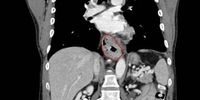The field of pharmaceutical analysis is set to benefit from a new open-source Raman dataset released on March 24, 2025. This innovative dataset boasts 3,510 samples covering 32 pure chemical compounds widely used in the development of active pharmaceutical ingredients (APIs). As access to high-quality Raman spectral datasets has presented a consistent challenge for researchers, this collection addresses significant gaps in the available reference data.
Raman spectroscopy is a pivotal technique in pharmaceutical analysis, mainly utilized for drug discovery, quality control, and the development of APIs. The method's effectiveness lies in its ability to provide detailed information about molecular compositions through the analysis of Raman spectra, which reflect the molecular vibrations and interactions of light with substances. The newly introduced dataset is expected to provide researchers with critical resources for referencing and model development, aiming at enhancing the accuracy and generalizability of calibration models while addressing the persistent issue of data scarcity.
The Raman spectral dataset was compiled using an Endress+Hauser (previously known as Kaiser Optical Systems) Raman Rxn2 analyzer, operating at an excitation wavelength of 785 nm. The system achieved an impressive spectral resolution of 1 cm-1 over a range extending from 150 to 3425 cm-1. This wide spectral range enables extensive chemical identification capabilities essential for pharmaceutical applications.
Data collection involved scanning thirty-two commercial solvents and reagents relevant to API development, ensuring that the dataset encompasses necessary substances commonly encountered in pharmaceutical manufacturing. Contributions to the robustness of the dataset were achieved through careful handling of sample preparation and data acquisition, minimizing contamination and ensuring the integrity of the results.
Every spectrum in the dataset reflects a single manual scan conducted under controlled conditions, capturing the molecular fingerprints of the compounds with precision. Despite the sophisticated equipment used, the raw data exhibited challenges, including fluorescence interference and baseline offsets, necessitating careful preprocessing. The final dataset is accessible for researchers and can support various analytical tasks, from sample analysis to the training of machine learning models aimed at improving spectral analysis.
The release of this open-source dataset is significant as it responds to the call for improved access to extensive, high-quality reference data in the data-driven realm of pharmaceutical research. With current commercial databases often being expensive and limited, providing a freely accessible alternative fosters greater research possibilities and democratizes access to essential scientific resources.
Beyond addressing data access issues, this dataset also serves educational purposes, aiding newcomers in the field to familiarize themselves with preprocessing techniques, identification of peaks in unknown samples, and understanding foundational concepts in analytical chemistry related to Raman spectroscopy.
The dataset has been deposited in a public repository hosted by Figshare and contains a comprehensive CSV file organized to facilitate user accessibility, including target labels and detailed information about each product employed in data collection. The dataset's structure allows simple integration into various programming languages and is intended to stimulate data-driven research endeavors.
In ensuring the reliability of the data generated by the Raman Rxn2 analyzer, the system underwent rigorous calibration and stability checks, adhering to manufacturer recommendations. This strict adherence to operational protocols ensures that the dataset produced is both reliable and reproducible, essential characteristics for scientific analysis.
Measurement repeatability tests were also conducted to validate the stability of peak positions within the spectra. Results demonstrated excellent repeatability, with most products showing no deviation from the average peak position, further cementing the dataset's credibility as a reliable resource.
The data preparation processes, including handling spectral offsets and selecting optimal normalization techniques, were meticulously crafted to ensure the dataset's robustness. Processes like the simple two-point correction algorithm for linear baseline offsets showcase the thoroughness involved in extracting high-quality data from raw spectral measurements.
This open-source Raman dataset exemplifies advances in data accessibility within the pharmaceutical sector, promoting collaborative efforts between researchers and driving innovation in analytical techniques. By enabling scientists to utilize a comprehensive, shared resource, it encourages further developments in drug discovery, process analytical technology, and the broader field of pharmaceutical analysis.
As researchers continue to grapple with the complexities of drug development and analysis, resources like the newly released Raman dataset are invaluable for fostering scientific inquiries and advancing the frontiers of pharmaceutical science. The future of analytical techniques may well rely on the collaborative and open access to data provided through such initiatives, elucidating new pathways for research and exploration.






